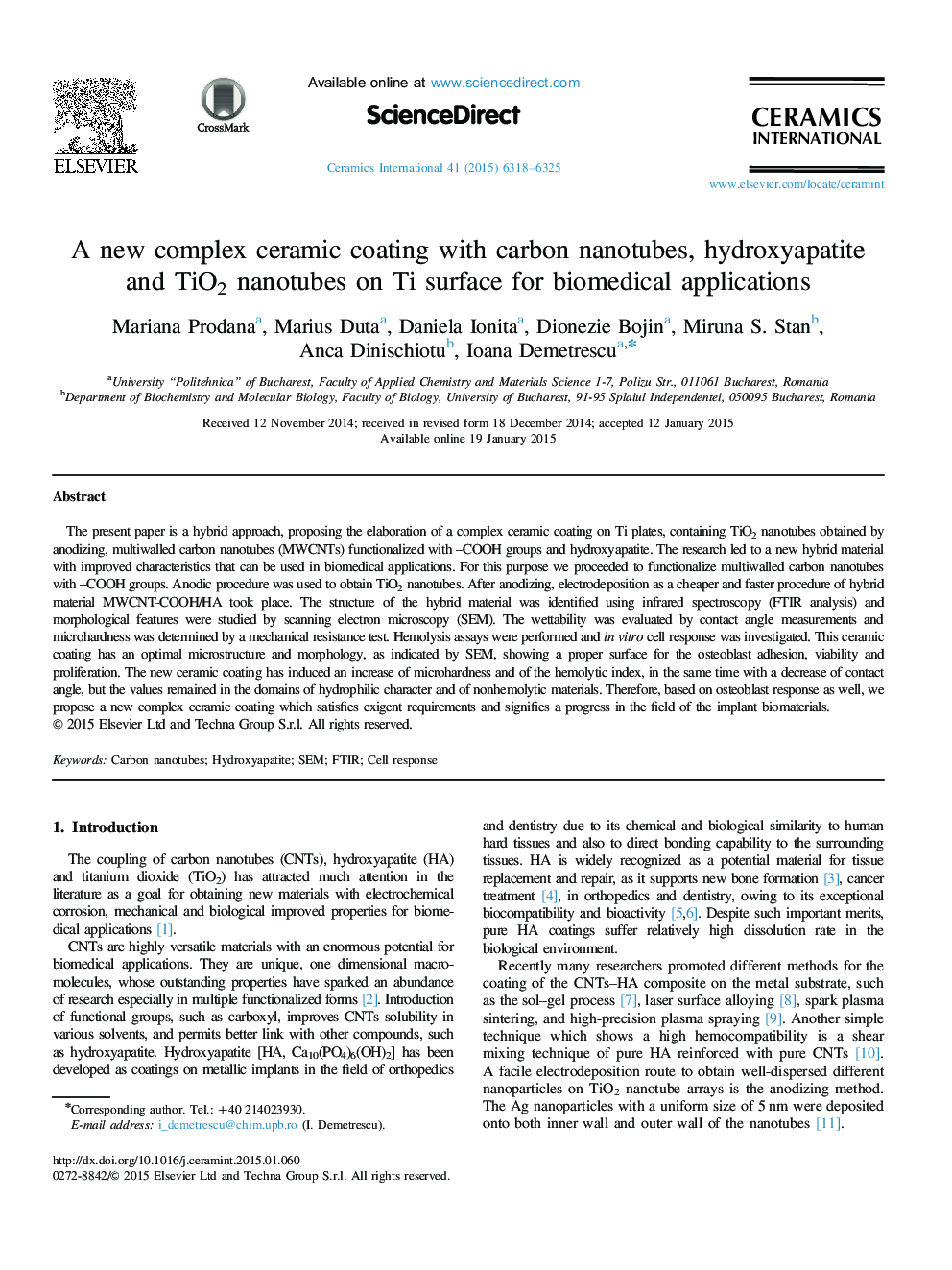| Article ID | Journal | Published Year | Pages | File Type |
|---|---|---|---|---|
| 1459834 | Ceramics International | 2015 | 8 Pages |
The present paper is a hybrid approach, proposing the elaboration of a complex ceramic coating on Ti plates, containing TiO2 nanotubes obtained by anodizing, multiwalled carbon nanotubes (MWCNTs) functionalized with –COOH groups and hydroxyapatite. The research led to a new hybrid material with improved characteristics that can be used in biomedical applications. For this purpose we proceeded to functionalize multiwalled carbon nanotubes with –COOH groups. Anodic procedure was used to obtain TiO2 nanotubes. After anodizing, electrodeposition as a cheaper and faster procedure of hybrid material MWCNT-COOH/HA took place. The structure of the hybrid material was identified using infrared spectroscopy (FTIR analysis) and morphological features were studied by scanning electron microscopy (SEM). The wettability was evaluated by contact angle measurements and microhardness was determined by a mechanical resistance test. Hemolysis assays were performed and in vitro cell response was investigated. This ceramic coating has an optimal microstructure and morphology, as indicated by SEM, showing a proper surface for the osteoblast adhesion, viability and proliferation. The new ceramic coating has induced an increase of microhardness and of the hemolytic index, in the same time with a decrease of contact angle, but the values remained in the domains of hydrophilic character and of nonhemolytic materials. Therefore, based on osteoblast response as well, we propose a new complex ceramic coating which satisfies exigent requirements and signifies a progress in the field of the implant biomaterials.
